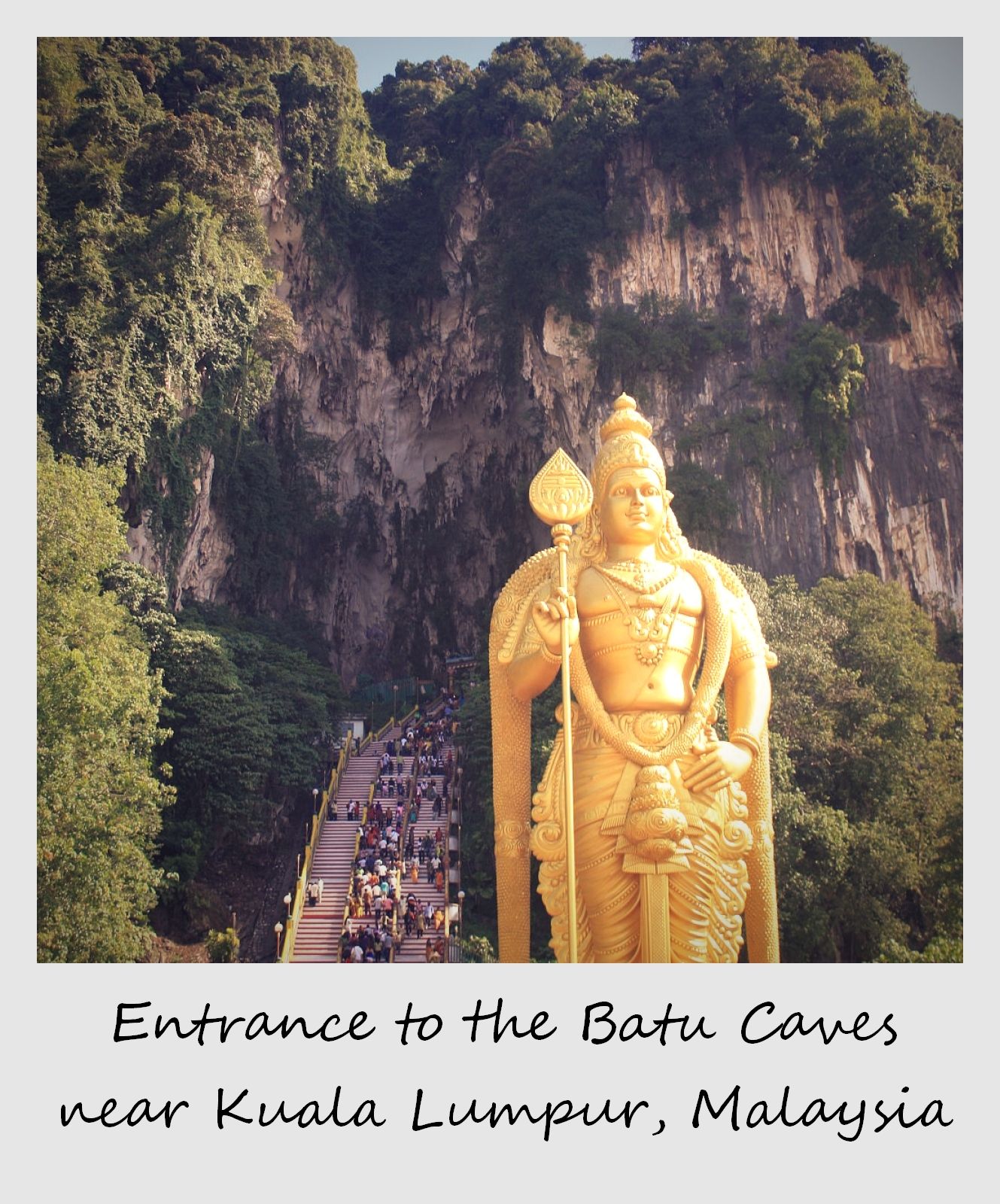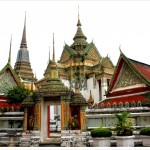Last Updated on January 14, 2025
As we found out this week, the Batu Caves serve as a triple attraction for visitors. On their own, they are actually a series of beautiful limestone caves just outside of Kuala Lumpur which double as one of the biggest Hindu shrines outside of India. The caves have been used for various religious purposes since the 17th century, but were dedicated to the Hindu religion in 1890, when the first Hindu shrine was constructed inside of the cave.
Now, Hindu pilgrims from all over Malaysia, South East Asia and as far as Australia make their way to the Batu Caves and this is the main location for the Thaipusam Festival in January/February, during which 1 million Indians flock to the caves in a 13 km pilgrimage from central Kuala Lumpur, showing their devotion to Lord Muruga by piercing their skin with metal hooks, spikes, even skewers.
The golden statue towering in front of the cave is the largest representation of the Hindu Deity Lord Muruga in the world, standing 42.7 m (140 ft) tall. All year round, Hindus dressed in traditional Indian saris come to the caves to worship the Hindu deities, carrying silver containers of milk on their heads as offerings for Lord Muruga, climbing the 272 stairs to the mouth of the caves.
The most spectacular Temple Cave has 100 meter high ceilings, houses several Hindu shrines, and is home to dozens of long-tailed Macaque monkeys who delight visitors by scurrying up and down the open side of the cave. On our visit we spotted at least 30 different monkeys of all ages, including adorable babies clinging to mama’s belly and small springy toddlers getting their tiny hands on some huge bananas.





